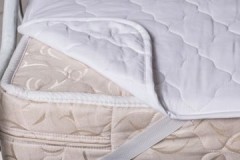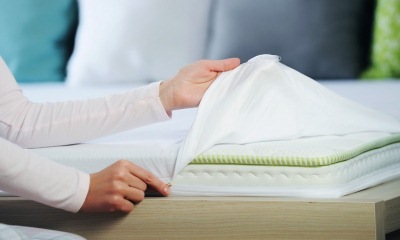 The mattress cover is designed to protect the sleeping area from dirt and stains. Thanks to its use, the mattress will always remain clean and fresh.
The mattress cover is designed to protect the sleeping area from dirt and stains. Thanks to its use, the mattress will always remain clean and fresh.
However, the mattress pad itself needs to be washed periodically. In this case, it is necessary to take into account the type of fabric from which it is sewn. The rules for caring for the product depend on this.
For more information about whether and how to wash a mattress cover, read the article.
Content
- Basic information on hand and machine washing
- Rules for processing different types of fabric
- The nuances of cleaning products with varying degrees of hardness
- How to wash a waterproof?
- How to remove stains?
- Caring for mattress covers from different manufacturers
- How to dry?
- How to dress afterwards?
- Important Tips
- Conclusion
Basic information on hand and machine washing
Wash the mattress cover needed at least once every 6 months. Vacuum it more often, with every change of bed linen. Periodically you need to hang the product out for fresh air.
These are general recommendations for washing times. Each person independently decides with what frequency it will be carried out.
Machine washable items made from fabrics such as:
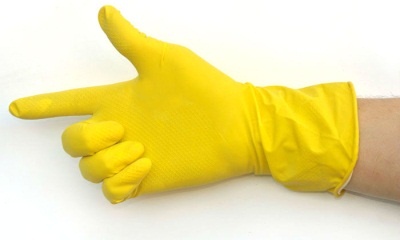 polyester;
polyester;- microfiber;
- cotton and linen;
- mixed fabrics: cotton with added synthetics;
- holofiber.
Items made from delicate fabrics, such as wool, are recommended to be washed by hand.Machine processing will lead to deformation of the cover, its stretching or shrinkage, so its further use will be impossible.
He will tell you about the rules for washing bedding. this chapter.
Rules for processing different types of fabric
There are some features of washing mattress covers made from different types of fabric.. Failure to comply with them may cause damage to the product.
Some covers can be washed in cool water, others - with gentle detergents. There are some mattress covers that can only be cleaned dry.
Cotton
Cotton mattress covers are machine washable. They do not require turning off the spin function. You can use regular laundry detergent as a detergent..
The white cotton mattress cover can be dried in the sun. Under the influence of ultraviolet radiation, additional disinfection of fabrics occurs.
Microfiber
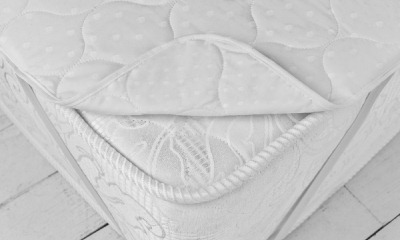 Microfiber is a synthetic fabric that is easy to clean. This mattress cover can be machine washed.
Microfiber is a synthetic fabric that is easy to clean. This mattress cover can be machine washed.
Basic rules to follow:
- Do not wash in water above 60 degrees.
- Do not use aggressive substances containing chlorine and acid for washing.
- Do not press at high speeds.
- Do not dry on the radiator.
By following these simple recommendations, you will be able to significantly extend the life of the product.
Bamboo
Bamboo mattress cover can be of three types:
- protective single-layer bamboo fiber cover;
- orthopedic mattress pad;
- mattress cover with bamboo filling.
Feather and down
Feather mattress covers washed according to the following rules:
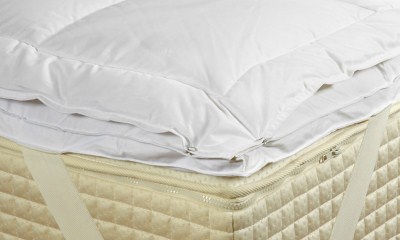 The water temperature should not exceed 40 degrees.
The water temperature should not exceed 40 degrees.- The maximum spin speed is 400 rpm.
- Be sure to turn on the extra rinse mode.
- Liquid powders or gel capsules are used as detergents.
- It is not recommended to use bleaching compounds and products containing aggressive components.
- The mattress cover should be hung to dry.
It is necessary to take into account that after getting wet, the weight of a feather mattress cover will increase by 3-4 times. Therefore, it is loaded into the drum of the washing machine in a single copy to prevent overload.
After drying, the feather cover is shakenso that the filler is evenly distributed throughout the cover.
Wool
Wool mattress covers are used for the cold season, as they perfectly retain heat in bed.
Such products are washed according to the following rules:
- Select the “wool” program on the washing machine display. It contains the necessary parameters by default.
- If there is no special mode for washing woolen products, the setting is carried out manually. The water temperature should not exceed 30 degrees, the spin cycle is turned off.
- Use only liquid detergents that contain lanolin.
- To make the mattress cover dry faster, after washing it is wrapped in a terry towel and gently pressed down. The fabric will absorb excess water.
- You should not iron or hang wool mattress covers in the sun.
Coconut
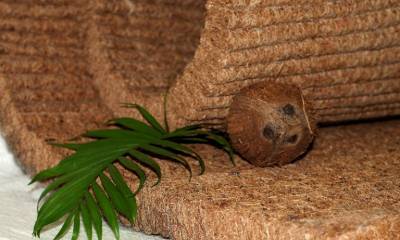 You cannot wash a coconut mattress pad. This fiber does not tolerate contact with water and loses its orthopedic function.
You cannot wash a coconut mattress pad. This fiber does not tolerate contact with water and loses its orthopedic function.
Basic rules for caring for the product:
- Regular ventilation. It is taken out into fresh air and left for several hours.
- Removing dust using a vacuum cleaner.
- Professional dry cleaning. It must be carried out at least once every 3 years.
If stains appear, they are removed using a sponge and a non-aggressive cleaning agent, such as liquid baby soap. Humidification should be minimal.
Holofiber
Holofiber is an artificial filler that is often used to make mattress covers. They can be washed both by hand and in a machine.
Basic Rules:
- maximum washing temperature – 90 degrees;
- spinning can be carried out at high speed;
- For washing, both powder and liquid detergents are used;
- If there is heavy dirt, the cover can be soaked.
Jacquard-satin
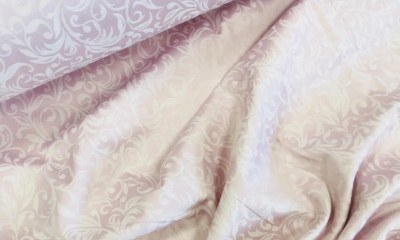 Jacquard satin is a finicky fabric that requires careful handling. Rules to follow:
Jacquard satin is a finicky fabric that requires careful handling. Rules to follow:
- Machine washable, but only in a gentle cycle;
- the water temperature should not exceed 30 degrees;
- spin is turned off;
- For washing, use liquid detergents, do not use bleaches.
When the mattress pad is dry, you can iron it at the lowest temperature. The product must be turned inside out.
Antibacterial
There are mattress covers impregnated with special antibacterial compounds. Such products must be washed according to the information indicated on the label. The rules for caring for them depend on what product was used as impregnation.
It is not recommended to use powders or aggressive compounds as detergents. They contribute to the rapid destruction of antibacterial components. Preference should be given to liquid concentrates.
The nuances of cleaning products with varying degrees of hardness
There are certain features of washing mattresses with varying degrees of hardness. All of them are listed in the table:
| Hardness degree | Features of care |
| Soft | Machine and hand wash. Possible spinning (depending on the type of fabric and filler). Wash with powder and liquid detergents. |
| Medium hardness | Hand wash or dry clean. Using liquid detergents that do not linger in fabric fibers and do not require prolonged rinsing. Wash in warm, but not hot water. |
| Hard | Dry clean only. Regular ventilation. Use a vacuum cleaner to get rid of dust. It is not recommended to knock out a hard mattress cover. To remove stubborn stains, use a soft sponge and soap solution. |
How to wash a waterproof?
 Waterproof mattress covers are made from membrane fabric. Thanks to its special structure, it repels liquid.
Waterproof mattress covers are made from membrane fabric. Thanks to its special structure, it repels liquid.
Before you start washing such a product, you need to make sure that the manufacturer does not prohibit it.. If there is a corresponding symbol on the label, you must contact the dry cleaner.
Machine wash should be gentle, without spinning and at low temperatures (up to 40 degrees). Do not wring out the fabric. The product is hung over the bathtub so that the water drains from it on its own.
The less often such a cover is washed, the better. Read more about washing waterproof mattress covers in this article.
How to remove stains?
During use, stains from food, biological fluids, cosmetics and more may appear on the mattress cover. Get rid of them using improvised means and household chemicals.
Each type of pollution has its own effective recipe:
- Oily stains. They are removed using dry substances, such as talc or starch. Sprinkle the powder onto the oil stain, press it with a napkin and leave for 1-3 hours. Then clean the fabric with a brush. If the stain remains, wipe it with any alcohol composition (vodka or cologne).
- Yellow stains. If yellowness appears on the mattress cover after washing, it is treated with hydrogen peroxide. If the stains are large, soaking will be required (take 4 tablespoons of peroxide for 5 liters of water). After 2 hours, the mattress cover is washed.
- Urine. If it got on the mattress cover recently and did not have time to dry, a classic wash is enough. To remove old stains, use a vinegar solution. It helps get rid of stains and unpleasant odors. Take 1 tbsp per liter of water. l. vinegar 9%. The product is soaked for 60 minutes, after which it is washed as usual.
-
 Tea and coffee stains. They can be easily removed with dishwashing detergent. It is applied to the dirt, rubbed lightly with a soft brush and left for 40 minutes.
Tea and coffee stains. They can be easily removed with dishwashing detergent. It is applied to the dirt, rubbed lightly with a soft brush and left for 40 minutes.To enhance the effect, you can add 1-2 tablespoons of soda, which is also rubbed into the stain. Then all that remains is to wash the bedding.
- Blood. If the stain is fresh, treat it with laundry soap, rub with a brush and rinse the fabric under running cool water.
Dried blood is moistened with a concentrated solution of soda and salt (take 2 tablespoons of each substance per 250 ml of water). After half an hour, the area is washed with soap.
- Cosmetics. Stains from mascara, lipstick and foundation can be easily removed with alcohol. Apply it to a cotton pad and wipe the contaminated area of fabric. When the stain has completely disappeared, you need to wipe the mattress cover with a damp, clean cloth and let it dry.
- Wine. You can remove the stain with ammonia. It is applied to a napkin, which is used to wipe the spilled wine. If the stain is old, a napkin soaked in ammonia is left on it as a compress for half an hour and rubbed with a brush. All that remains is to wash the mattress cover in a machine or by hand.
Caring for mattress covers from different manufacturers
Depending on the manufacturer of the mattress cover, there are certain features of caring for it. Basic recommendations:
-
 Ascona. The top layer of the product is made of cotton fabric, so washing at high temperatures may cause shrinkage.
Ascona. The top layer of the product is made of cotton fabric, so washing at high temperatures may cause shrinkage.The manufacturer recommends cleaning it in water up to 40 degrees. Machine washable, but on gentle cycle.
Hard mattress covers are processed only manually or dry. Read about washing Askona mattress covers Here.
- Ormatek. These high quality products require careful care.If the cover is thin, then it can be washed in a machine, turning off the spin cycle.
The water temperature should not exceed 30 degrees. For hard orthopedic mattress covers, only dry cleaning is suitable.
- Ikea. Most often, such mattress covers are made of polyester and cotton. Therefore, they can be machine washed at 60 degrees and at low speeds. It is not recommended to use stain removers, bleaches and conditioners. Products are not allowed to be ironed.
The range of mattress cover manufacturers offers is quite wide. Therefore, there are no universal instructions for caring for them. Before washing, you need to study the information indicated on the product label.
How to dry?
You need to dry the cover correctly, taking into account the following information:
- Products are not suspended. To maintain its original shape, it is dried on a flat surface.
- It is not recommended to place covers on heating devices.
- The better the ventilation in the room and the lower the level of air humidity, the faster the bedding will dry.
- Light-colored mattress covers can be dried in the sun. This will provide additional disinfection of the fabric.
How to dress afterwards?
 After washing, the mattress cover must be placed correctly on the mattress.
After washing, the mattress cover must be placed correctly on the mattress.
Basic recommendations:
- If there is oilcloth, it should be adjacent to the mattress. There is always fabric at the top.
- To understand where the width of the product is and where the length is, you need to lay it out on the bed.
- If there are elastic bands sewn into the corners, they are tightened one by one.
A correctly installed mattress cover should lie flat on the bed, without folds or lumps.
Important Tips
Tips to help make washing safe and effective:
- Before loading things into the drum, you need to sort them by color so that the mattress cover does not fade.
- Before using a new stain remover or any available product, you need to test it on an inconspicuous area of the fabric.
- The less frequently a product is machine washed, the longer it will last, so you should only use it when necessary.
- To prevent the mattress cover from getting dirty, it is not recommended to sleep on it. It must be covered with a sheet.
Conclusion
Washing a mattress cover is a responsible process that requires compliance with certain rules. Soft products made of synthetics and cotton tolerate machine processing well. Covers of medium hardness are subject to hand washing.
Covers made of bamboo and coconut coir, as well as orthopedic products can only be dry cleaned. By following the manufacturer's recommendations, you will be able to significantly extend the life of your bedding.

